Venous pathologies affect people of different age categories, including young people. Therefore, the question naturally arises: is it possible to play sports with varicose veins? Are there any restrictions on how dangerous calf muscle loads are?
Is sport dangerous for varicose veins
The opinion that having a disease of the veins you cannot engage in physical activity is wrong. There are disciplines that have a beneficial effect on the condition of blood vessels. Moderate exercise is indicated at various stages of the disease. Under the supervision of a doctor, they are engaged even with a complex form of pathology.
The answer to the question of whether it is possible to actively engage in sports with varicose veins can only be given by a phlebologist. After analyzing all the data of a person's physical condition, the specialist will tell you which disciplines to give preference to, what to avoid. The training allows:
- normalize lymphatic flow;
- strengthen the body;
- normalize blood circulation;
- strengthen the vein walls.
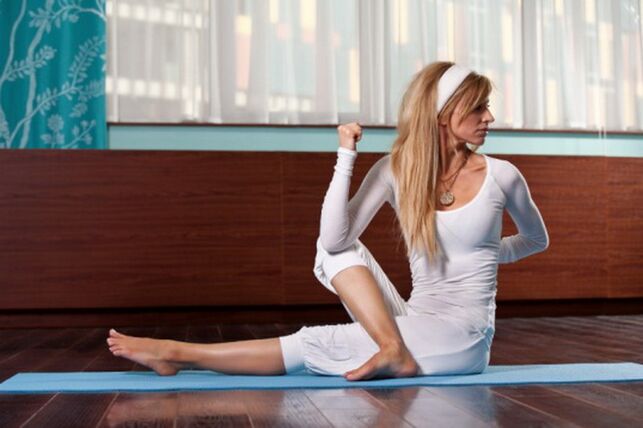
When choosing a sport, they take into account that in case of illness it is difficult to strain or relax a certain muscle group. Properly chosen discipline allows you to normalize blood circulation. This leads to an improvement in the condition of the vessels, reduces the manifestations of pathology.
Recommendations for training with venous diseases
To correctly combine varicose veins and sports, it is important to take into account the advice of specialists. They will make efforts more productive and avoid complications.
Here are their recommendations:
- when standing, the greatest load on the legs occurs;
- the best option - the "sitting" and "lying" courses;
- for the training of the heart muscle, we favor a rowing machine or a horizontal exercise bike;
- in class it is necessary to perform an elastic bandage of the legs;
- the upper body muscle group is not limited in loads;
- drinking plenty of water is good for the blood.
Whatever sport a person chooses, the load on the calf muscles should be moderate.
Choice of fillers
Although fitness and varicose veins are successfully combined, it is necessary to choose sports loads taking into account the individual characteristics of the body. The disease leads to stagnation of blood, the formation of knots in the vessels, twisting of the veins. Intense exercise can be harmful, lead to irreparable consequences.
Water
Sports activities are accompanied by profuse sweating. It is necessary to replenish the loss of fluid in the body. Since the thickening of the blood is especially dangerous in the pathology of the veins. This leads to poor circulation, stagnation and the appearance of blood clots. Drinking plenty of water replenishes the water content of tissue cells, makes the blood more liquid. As a result, the heart muscle and valves work with less stress, blood circulation in the vessels is accelerated.

Adapted clothing
Sports with varicose veins are best practiced in special clothes. On sale there are special types of ammunition designed to keep muscles in shape. They reduce the efforts of the legs, correctly distribute the pressure on the calf muscles.
Compression stockings (socks, stockings, tights) not only help well in training, but are also suitable in everyday life. Regular use of combinations in combination with the main therapy rehabilitates the walls of blood vessels, speeds up recovery.
What sports to do when you are sick
Useful sports for varicose veins:
- Aquagym and swimming.
- Cycling is good for strengthening leg muscles because you have to work at a constant pace.
- Walking in comfortable shoes strengthens blood vessels.
- Golf. During the competition, athletes are constantly moving in the fresh air, which has a beneficial effect on health.
What sports can be done with venous pathology will be discussed further.
nautical sports
The recommended sport for varicose veins is swimming. Classes in warm water reduce the load on the vessels, tighten the muscles, strengthen the walls of the veins. Water has a good effect on the veins. Classes in the water are allowed even at difficult stages of varicose veins.
Yoga
Pilates yoga is allowed when you are sick. These exercises are performed in a static position and are indicated for venous diseases. During classes, it is necessary to observe the correct execution, to control breathing.
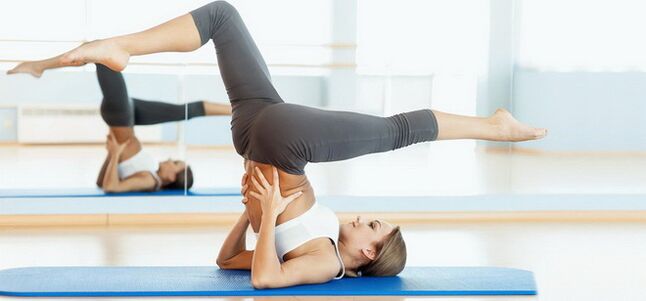
Therefore, it is undesirable to practice yoga alone. An experienced master monitors the correct setting, helps to relax, acts on the correct muscles.
Authorized with restrictions
What kind of sports you can do with restrictions for varicose veins, you can find out from a phlebologist. Experts advise:
- running at an intensity agreed with the doctor;
- physical fitness is useful at the initial stage of the disease;
- machines designed for training while lying down;
- dance classes (except the bouncing elements) are good for the legs.
Course
Running at a moderate pace is useful in pathology. During classes, the heartbeat quickens, the muscles of the heart work more actively, the blood circulates faster. Valves in the veins of the legs begin to work more intensively, congestion is eliminated. For jogging, it is important to choose the right shoes - orthopedic insoles and comfortable sneakers reduce the load on the calf muscles.
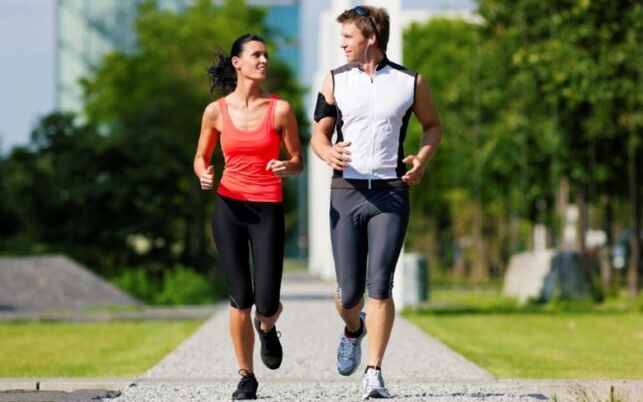
The duration and pace of running is determined by the attending physician depending on the patient's state of health.
Walking
Walking is acceptable and available for varicose veins. Walking is done outside in comfortable shoes. It is good to wear compression garments before walking. The pace should be moderate, it can be alternated with short runs. Walking in place is indicated in the later stages of the disease.
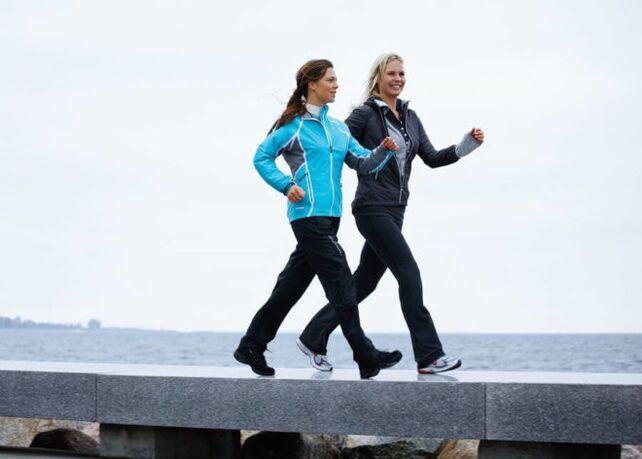
Invalid exercises and load
Varicose veins in athletes appear when performing power disciplines, types that require an increased load on the legs when refusing to wear a suit.
About jumps and squats
With caution, you need to jump and crouch. At an advanced stage of the disease, such exercises should not be performed. At an early stage, actions are performed at a slow pace, without amplifiers.
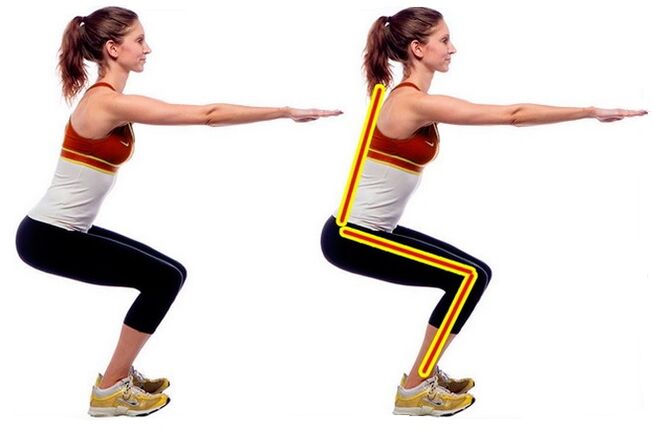
During classes, you need to constantly monitor the condition of the veins. As soon as a deterioration is detected, the courses stop immediately. The patient should seek advice.
Squats can be practiced provided they are performed shallow.
Anaerobic load
Anaerobic activities involve physical exercise that causes a lack of oxygen. Strength training, work with kettlebells and dumbbells, weightlifting and bodybuilding, cycling, running are contraindicated sports for venous pathology. In conditions of lack of oxygen in the body, processes are activated that help fill the lack of air - the heart beats faster, the pressure increases. This condition is dangerous for problematic veins, as it causes thrombosis, bleeding.
Classes with anaerobic loads are permitted at an early stage of disease under the following conditions:
- using compression garments or bandaging the legs with elastic bandages;
- reduced class time;
- to drink a lot of water.
Exercise equipment and varicose veins
It is necessary to work on simulators of varicose veins after coordinating the loads with the phlebologist. The main rule is the minimum load on the legs.
Strength training is appropriate at the initial stage of the disease, provided that it is carried out in a horizontal position. This reduces the load on the legs, the load for the muscles of the upper body is selected as desired.
A good alternative to jogging and cycling is to work out on simulators. With varicose veins, you cannot run or ride a bicycle. Modern models regulate the load, control the pulse, monitor the pressure, the condition of the calf muscles. An exercise bike with back support makes the load on the leg muscles easier, as the center of gravity shifts to the rear.
Fitness and gymnastics
Classes with low physical exertion with varicose veins are allowed subject to the rules:
- during training, wrap your legs with an elastic bandage or wear compression garments;
- avoid shock loads, strength exercises;
- perform movements correctly;
- monitor the condition of blood vessels.
With the appearance of spider veins, feeling of heaviness, you should immediately seek advice from a phlebologist.
What to do after training
During sports, the movement of blood is accelerated, the calf muscles are warmed up. Immediately after training, you should give them a rest. It is good to lie on your back with your legs above body level. This will help relax, circulate blood to the heart, and restore breathing.
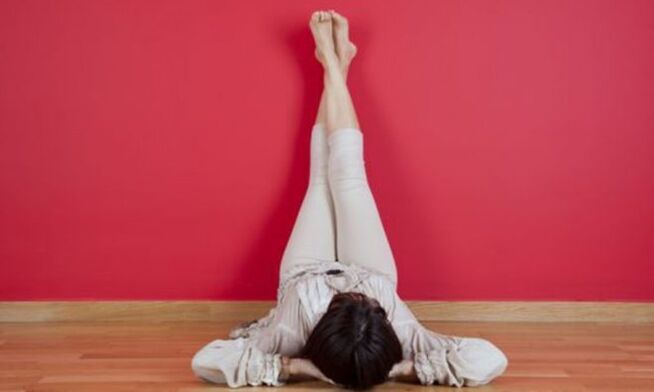
Contraindications for sports
For patients with varicose veins, professional sports are contraindicated. This is especially true for people after surgery to remove veins or knots.
You can not expose the body to heavy loads, you should avoid intense running, cycling. Contraindications for sports - an advanced form of the disease: obvious swelling of the vessels, the presence of knots. Independent exercises can cause complications.
Prevention of varicose veins
Traditional medicine offers a wide range of means to cope with the disease. For example, St. John's wort and ginger root strengthen the immune system, contribute to the normalization of blood circulation.
Prevention of varicose veins can be called smoking cessation, alcohol abuse. A long stay in high heels, abuse of hot baths and saunas have a detrimental effect on blood vessels.

















